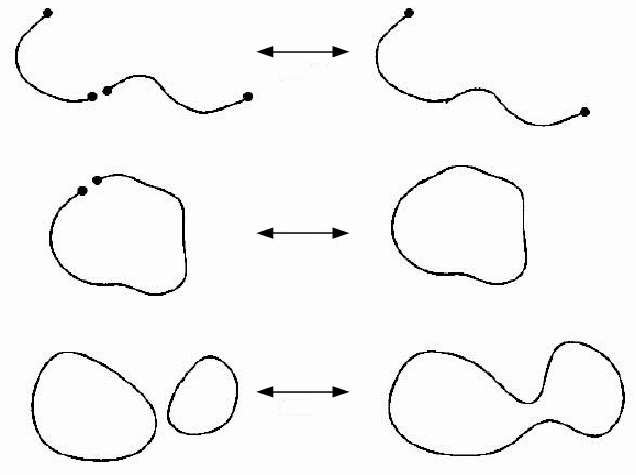In string theory, the elementary particles are thought of as the "musical notes" or excitation modes of elementary strings.
In string theory the string must be stretched under tension in order to vibrate, in the same way as a violin string. Though the strings in string theory are moving in spacetime, they have tension of a sort, roughly inversely proportional to the length of the string – or the size of the particle. Particle interactions become the joining of strings or breaking of strings into pieces, or pieces of string becoming loops or vice versa, as shown below.

If string theory is to be a theory of quantum gravity, then the average size of a string should be somewhere near the length scale of quantum gravity, called the Planck length, which is about![]() Unfortunately, this means that strings are too small to see with present technology and so string theorists must use indirect methods to test the theories.
Unfortunately, this means that strings are too small to see with present technology and so string theorists must use indirect methods to test the theories.
String theories are classified according to whether or not the strings are required to be closed loops, and whether or not the particle spectrum includes fermions. In order to include fermions in string theory, there must be a special kind of symmetry called supersymmetry, which means for every boson (particle that transmits a force) there is a corresponding fermion (particle that makes up matter). So supersymmetry relates the particles that transmit forces to the particles that make up matter.
Supersymmetric partners currently known particles to particles that have not been observed in particle experiments, because supersymmetric particles are too massive to be detected at the energies attainable with current accelerators, though scientists may reach the energies needed in the next few years.
